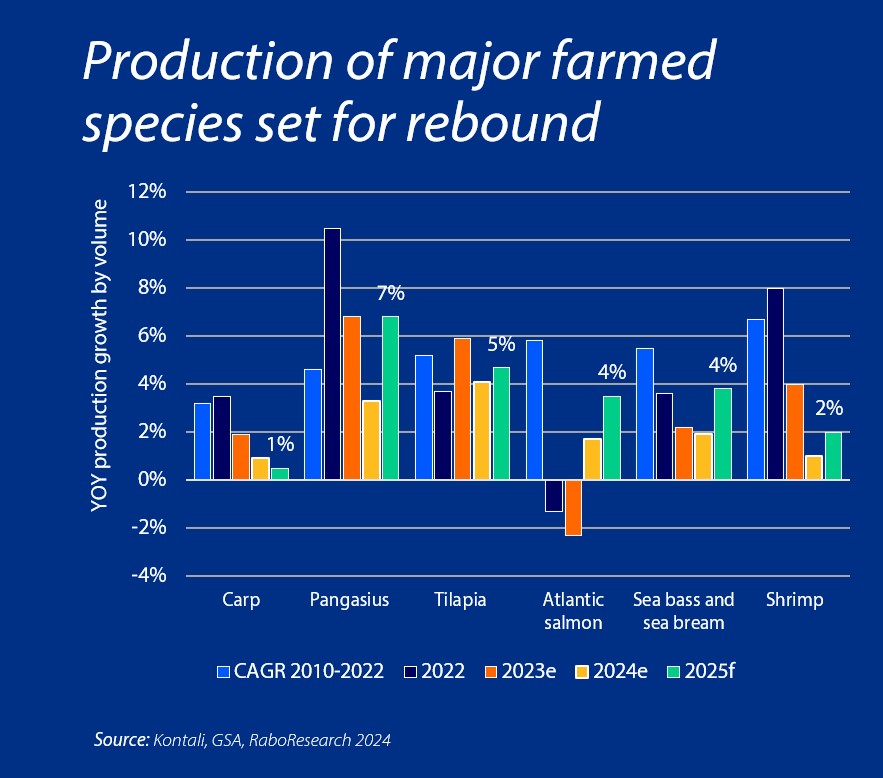
News
Global aquaculture to see steady growth in 2025, RaboResearch predicts
December 24, 2024 By Aquaculture North America staff
 Global aquaculture industry to see steady growth in 2025 (Photo: RaboResearch)
Global aquaculture industry to see steady growth in 2025 (Photo: RaboResearch) A new report from RaboResearch states that the global aquaculture industry should see improved production growth for certain species in 2025.
According to the report, Finfish production could have the greatest growth, while shrimp, which faces relatively low prices, is expected to grow just two per cent yearly. Lower feed prices and better demand may benefit producers. However, increasing tariffs and trade restrictions may hinder the industry.
“Atlantic salmon production is expected to experience mild growth from 2024 to 2026, following two consecutive years of decline,” said Novel Sharma, seafood analyst at RaboResearch.
Sharma said Norway is poised to lead the growth with yearly increases projected at 2.2 per cent in 2025 and 5.3 per cent in 2026. The resulting estimated output is 1.56 million and 1.64 million metric tons, respectively.
“This growth is contingent on stable biological conditions and improving harvest weights,” Sharma added.
Chile is expected to gradually return to a growth trajectory, with a 1.4 per cent yearly production increase expected in 2025 and 3.2 per cent in 2026. Production volumes may not surpass 2020 levels before 2026.
“Despite relatively low prices, we expect global shrimp production growth will remain positive,” said Sharma. After years of strong growth, shrimp production is slowing, with volumes projected to increase by only one per cent yearly in 2024 and two per cent in 2025.
For Latin America, shrimp production is expected to be slow, with growth rates dropping to two per cent in 2024 due to lower prices. However, growth is anticipated to increase to four per cent in 2025 as the oversupply situation eases.
Ecuador’s shrimp production will also experience a slowdown while China and India are looking good for modest growth in 2025 at 1.7 per cent and two per cent, respectively. Vietnam’s production is forecast to grow by four per cent in 2025, although disease management and high production costs continue to pose challenges.
Freshwater species are expected to have the highest growth among farmed species with Pangasius production expected to growing up seven per cent yearly.
RaboResearch’s annual aquaculture survey on finfish and shrimp production, done together with the Global Seafood Alliance (GSA) also showed that the industry is concerned about the market and economic conditions as it heads toward 2025. Ongoing geopolitical uncertainties pose significant challenges.
“Seafood is the most traded animal protein, with a larger trade value than all other animal proteins combined,” said Sharma. “Donald Trump’s presidential victory in the U.S. could mean new import tariffs. This is especially significant for the seafood sector, as the U.S. is the world’s largest importer, relying on imports for over 80 per cent of its seafood consumption. Moreover, the potential trade war is likely to involve China, the world’s largest seafood producer, exporter, and re-processor.”